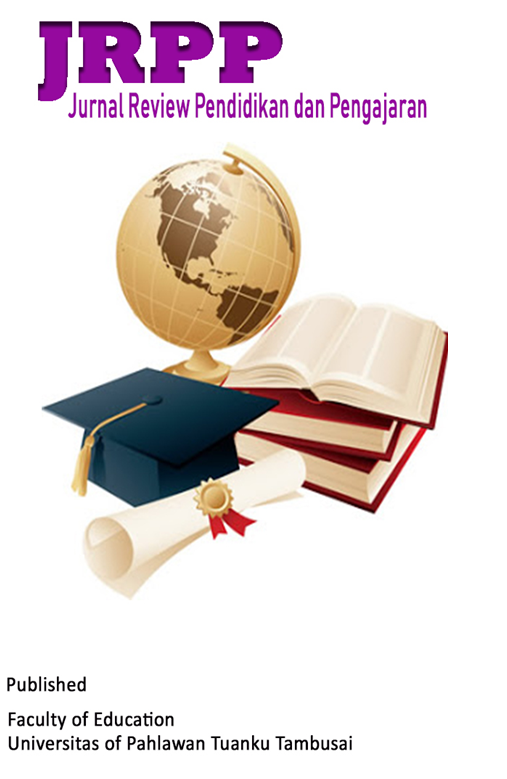SIBIKU SIGN LANGUAGE APPLICATION INTRODUCION FOR JUNIOR AND SENIOR HIGH SCHOOL STUDENTS AT SLB NEGERI 2 DENPASAR
DOI:
https://doi.org/10.31004/cdj.v4i2.13951Keywords:
application, hearing impaired, high school, learning, sign languageAbstract
Hearing impaired is the condition of a person who experiences a deficiency or loss of the sense of hearing so that they are unable to perceive stimuli in the form of sounds, voices, or the like, which results in normal communication skills being unable to be carried out properly by people with hearing loss They need sign language for communication between them and normal people. Due to hearing difficulties, exclusive learning is needed using learning media in the form of a sign language dictionary to recognize vocabulary in sign language. The SIBIKU application was created to make it easier for hearing-impaired people to learn sign language vocabulary with features from the SIBIKU application, which uses moving images to make it easy to model sign language movements. There is also a Morse vibration feature, which converts numbers and letters into Morse in the form of vibrations generated by the user's smartphone. And for practice materials, this application has a sign word guessing feature as an evaluation material for learning sign language vocabulary. With dynamic data, it is hoped that the SIBIKU application can help solve problems faced by teachers and children with hearing loss at SLB Negeri 2 Denpasar in learning sign language vocabulary.References
Arbiyah, N., Nurwianti, F., & Oriza, D. (2008). Hubungan bersyukur dengan subjective well being pada penduduk miskin. Jurnal Psikologi Sosial, 14(1), 11-24.
Light, M. A., & Light, I. H. (2008). The geographic expansion of Mexican immigration in the United States and its implications for local law enforcement. Law Enforcement Executive Forum Journal, 8(1), 73-82.
Ansori, M. (2020). Dimensi HAM dalam Undang-undang Sistem Pendidikan Nasional Nomor 20 Tahun 2003. Iaifa Press.
El Rahma, V., Markub, M., & Arifin, Z. (2022). Pembelajaran Bahasa Indonesia Dengan Sistem Isyarat Elektronik (E-SIBI) sebagai Media Komunikasi Siswa Tunarungu di SLB Negeri Tambahrejo. EDU-KATA, 8(2), 144-155.
Dewanti, P., Saridewi, D. P., & Supuwiningsih, N. N. (2021). Pemanfaatan Pembelajaran Digital pada Masa Pandemi Covid-19 untuk Meningkatkan Kualitas Pembelajaran di Panti Asuhan Dharma Laksana. IKRA-ITH ABDIMAS, 4(3), 145-153.
Bali Island Map. (2021). Map Pulau Bali. Bali Citra Satelit. www.maps.google.com. Diakses tanggal 1 December 2022.
Kalahatu, M. F. (2021). Persepsi peserta pelatihan dasar terhadap penggunaan quizizz sebagai metode evaluasi pembelajaran. Akademika: Jurnal Teknologi Pendidikan, 10(01), 163-178.
Andriani, V. (2016). Strategi Pembinaan Anak Tuna Rungu dalam Pengembangan Interaksi Sosial (Studi Kasus di SLB Negeri Kecamatan Sinjai Utara Kabupaten Sinjai) (Doctoral dissertation, Universitas Islam Negeri Alauddin Makassar).
Tat, B. A., Hudin, R., & Nardi, M. (2021). Metode Pembelajaran Dalam Mengembangkan Interaksi Sosial Anak Tunarungu. Jurnal Literasi Pendidikan Dasar, 2(1), 21-32.
Nugroho, H. A. (2016). Kemampuan Berinteraksi Sosial Menggunakan Bahasa Isyarat Anak Tunarungu di kelas III SLB Wiyata Dharma I Tempel Sleman. WIDIA ORTODIDAKTIKA, 5(3), 224-231.
Rahmat, P. S. (2019). Strategi Belajar Mengajar. Pt. Scopindo Media Pustaka.
Downloads
Published
How to Cite
Issue
Section
License
Copyright (c) 2023 Paula Dewanti, Indriyani Indriyani

This work is licensed under a Creative Commons Attribution-ShareAlike 4.0 International License.
















